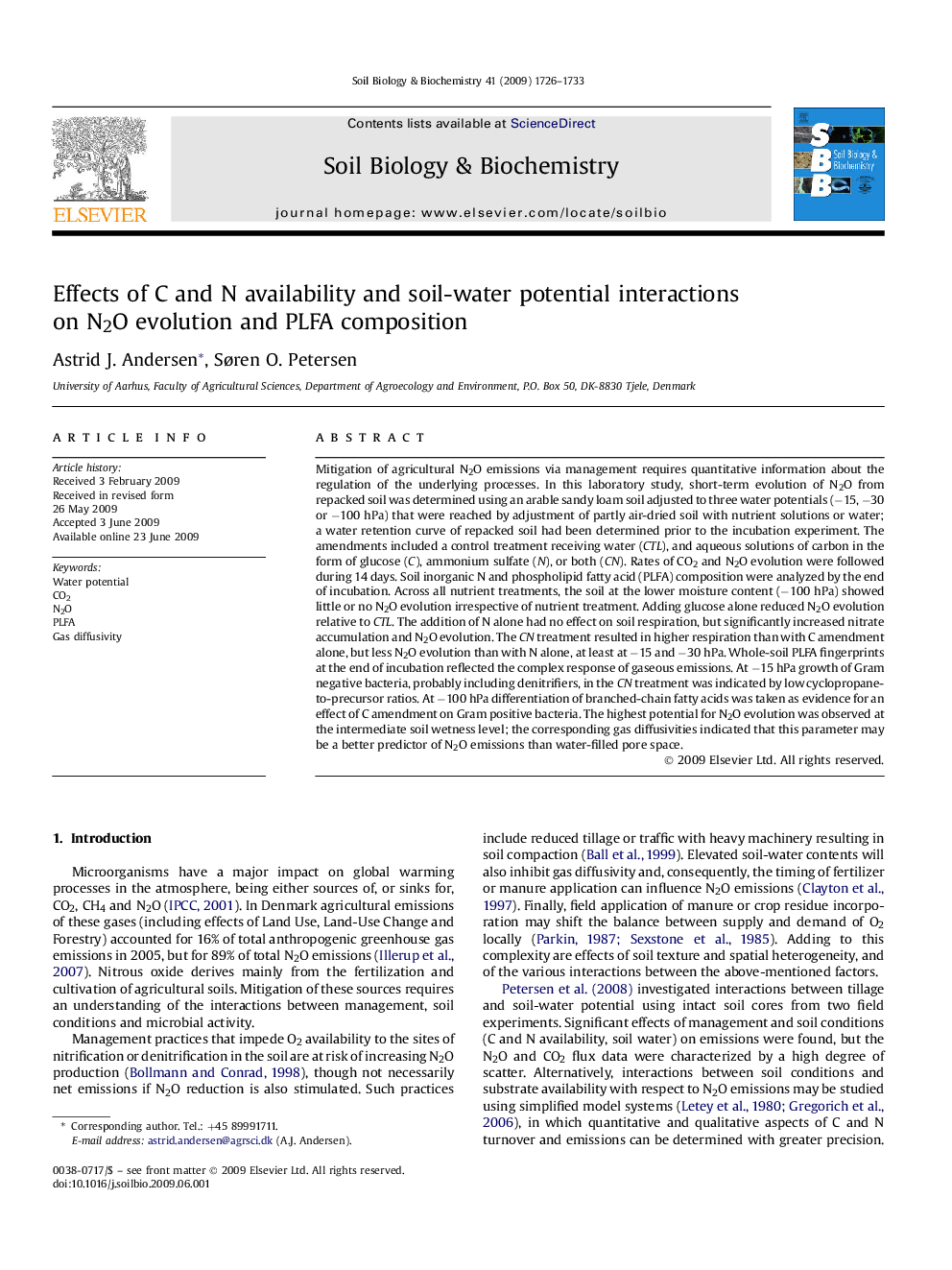| Article ID | Journal | Published Year | Pages | File Type |
|---|---|---|---|---|
| 2026391 | Soil Biology and Biochemistry | 2009 | 8 Pages |
Mitigation of agricultural N2O emissions via management requires quantitative information about the regulation of the underlying processes. In this laboratory study, short-term evolution of N2O from repacked soil was determined using an arable sandy loam soil adjusted to three water potentials (−15, −30 or −100 hPa) that were reached by adjustment of partly air-dried soil with nutrient solutions or water; a water retention curve of repacked soil had been determined prior to the incubation experiment. The amendments included a control treatment receiving water (CTL), and aqueous solutions of carbon in the form of glucose (C), ammonium sulfate (N), or both (CN). Rates of CO2 and N2O evolution were followed during 14 days. Soil inorganic N and phospholipid fatty acid (PLFA) composition were analyzed by the end of incubation. Across all nutrient treatments, the soil at the lower moisture content (−100 hPa) showed little or no N2O evolution irrespective of nutrient treatment. Adding glucose alone reduced N2O evolution relative to CTL. The addition of N alone had no effect on soil respiration, but significantly increased nitrate accumulation and N2O evolution. The CN treatment resulted in higher respiration than with C amendment alone, but less N2O evolution than with N alone, at least at −15 and −30 hPa. Whole-soil PLFA fingerprints at the end of incubation reflected the complex response of gaseous emissions. At −15 hPa growth of Gram negative bacteria, probably including denitrifiers, in the CN treatment was indicated by low cyclopropane-to-precursor ratios. At −100 hPa differentiation of branched-chain fatty acids was taken as evidence for an effect of C amendment on Gram positive bacteria. The highest potential for N2O evolution was observed at the intermediate soil wetness level; the corresponding gas diffusivities indicated that this parameter may be a better predictor of N2O emissions than water-filled pore space.
